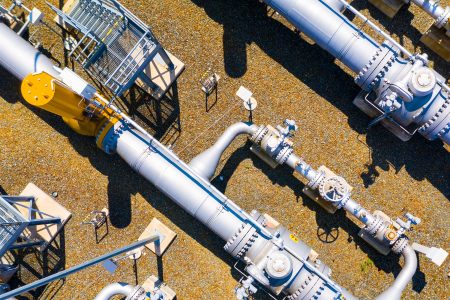The rise in gas prices in Europe attributed to Ukraine’s recent invasion of Kursk, is expected to add to Russian revenues from selling fossil fuels, further widening the gap between such payments and the total amount of EU support to Kyiv.
Since the Kremlin launched its invasion of Ukraine in February 2022, EU countries have paid €200 billion for Russian fossil fuels, mostly oil and gas, according to an analysis by think-tank CREA.
Meanwhile, total EU and US support to the war-torn country stands at just €185 billion, as tracked by the Kiel Institute for the World Economy.
Russian earnings from gas sales, making up slightly less than half of its income from delivering energy to the EU, are due for a boost on the back of an unexpected 13% rise in gas prices in the last week.
The cause: Ukraine’s counter-invasion of the Russian province of Kursk, from where Gazprom pumps gas to Europe, had prompted traders to act in anticipation of a cut in flows, say analysts.
“The bull run is a speculative bet on supply-side disruptions,” writes trade publication EnergyFlux.
Observers caution that the price surge may collapse as disruptions are “by no means guaranteed to happen”, writes EnergyFlux‘s Seb Kennedy. Analyst Tom Haddon called it “overblown.”
But while Europe has done much to reduce its energy imports from Russia, the gas price rally triggered by the Kursk incident highlights a bigger problem: European money continuing to flow to the Kremlin in exchange for energy.
Between 29 July and 4 August alone, EU countries spent more than €400 million, mostly on gas – which the Kremlin can now sell at higher prices following the rally – and oil, according to CREA.
This money pales in comparison to previous financial flows – from €5.3 billion in March 2022 falling to €1.5 billion today – but means that while the EU has come a long way in reducing its dependence on Russia, it is far from done.
Russian coal – which made up a minor share of the total – has been banned from Europe entirely, but the same cannot be said for other energy sources.
While Russia now supplies less than 3% of the EU’s diesel, down from around 50% in 2021, and less than 5% of its crude oil, down from 25% – according to an analysis by Brussels-based think-tank Bruegel – total gas imports from Russia have fallen by just around 75% over the same period, with pipeline flows falling from 155 billion cubic metres (bcm) to 27 bcm in 2023.
A surge in Russian liquefied natural gas (LNG) imports cushioned the overall drop.
Europe “remains the largest customer of Russian pipeline and LNG gas,” warned a cross-party alliance of members of the European Parliament (MEPs), in March, urging for a ban on all Russian energy commodities.
The situation observed at the time remains unchanged today. A web of long-term contracts, landlocked countries dependent on pipelines to the East, and a lack of restrictions on LNG cargoes means that European money is propping up the Kremlin’s war machine, as the MEPs criticised in their letter.
From early August, EU countries have the power to unilaterally ban Russian LNG when the bloc’s new gas market rules come into force. So far, no country has taken this step, although Lithuania had called for a divorce from Russian LNG in July.
Take the Survey at https://survey.energynewsbeat.com/

